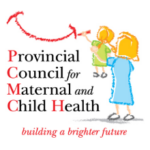
June 2023 | Issue 3
The Safe Administration of Oxytocin guideline report was developed by PCMCH in 2019 to aid in reducing the risk of misuse and mismanagement of oxytocin. PCMCH completed an evaluation of the Safe Administration of Oxytocin guideline report and toolkit in March 2023. A multi-pronged approach was used to determine the degree of uptake, effectiveness and utility of the report and toolkit. This involved gathering feedback via a survey issued to all birthing hospitals, as well as the analysis of data from the Better Outcomes Registry & Network (BORN) Ontario.
Nearly a third of the province’s birthing hospitals (28) participated in the survey, with all participating hospitals reporting safe use of oxytocin as a high-priority area for their hospital sites. The majority of respondents applied nearly all 11 of PCMCH’s recommendations to some degree. While supportive leadership, interprofessional collaboration and ease of use were identified as common enablers for implementation, the COVID-19 pandemic and limited health human resources were identified as significant barriers. Notable successes and improvements in outcomes related to the standardization of processes and protocols, safer labelling and medication handling, better communication and staff training.
Five perinatal outcome indicators and two neonatal outcome indicators were examined in the BORN data. The perinatal outcome indicators were related to oxytocin induction and augmentation, vaginal births, cesarean section, postpartum hemorrhaging and fever (>38.5 °C). The neonatal outcome indicators were related to Apgar scores (<4 at 5 min of life) and arterial cord blood pH (< 7.0 at birth), as well as NICU admission (of infants weighing ≥ 2500 grams). Trends in these outcome indicators will be monitored over time.
Visit the Safe Administration of Oxytocin - Evaluation Findings in Brief page on our website for more information.
